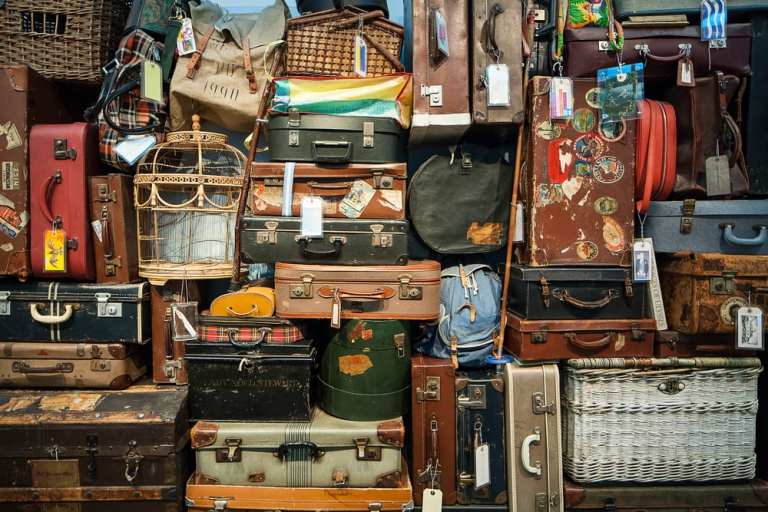Online Sales Of Used Goods Spreads Globally — And Is Growing Up

What’s new is old – and then new again.
That’s not some silly riddle, but a description of a growing part of eCommerce, one that is going far beyond the resale of used apparel into other, more complicated and costly products.
Recently, India has been receiving more of the spotlight for this practice, which years ago acquired the label “recommerce.”
Just consider the news this week: Truebil, an online marketplace for buying and selling secondhand cars, has raised $14 million in a Series B round led by Japanese investor Joe Hirao, the founder of ZIGExN. Selling used cars via online channels is hardly new — hello, eBay and Craigslist and other outlets — but this marketplace offering goes beyond the mere sale, offering services vital to any used vehicle transaction: free inspection, valuation, quick-sell guarantee, vehicle buying consulting, smooth paper transfer, loan assistance, insurance and more.
China, too, is experience growth in online sales of used cars. Uxin, a secondhand car sales website, is enjoying high double-digit sale gains, and its founder reportedly has called for “establishing a product standardization system to give customers confidence in purchasing used cars, like shopping for other products online.”
Phones and Luxury Watches
The investment in that online used car marketplace follows similar activity in India, which has emerged as a battleground for digital payments and eCommerce, drawing in the biggest global players. Last year, for instance, India-based and Walmart-owned Flipkart has launched an eCommerce platform called 2GUD that focuses on the sale of refurbished electronics. The products sold by 2GUD come with warranties of up to 12 months, with the option of returns within 10 days of purchase.
Warranties and guarantees are important for increased sales of used items online — and that includes luxury items like high-quality Swiss watches.
And eBay is upping its game in that area, via what a Reuters report called the marketplace’s push to get “better at checking that only genuine timepieces are sold on the online platform.” In an interview with the news agency, James Hendy, who oversees eBay’s authentication service for luxury goods, said that “by the end of 2019, we look to have an entire suite of services available to all luxury watch sellers and buyers on the platform.” He expects eBay to achieve $1 billion in transaction volume in used luxury watches annually.
Consumer Attitudes
The fuel behind that effort?
In part, younger consumers are more willing than older ones to buy used luxury watches online, assuming they are what they are supposed to be. Indeed, that is what prompted “Cartier owner Richemont to buy secondhand platform Watchfinder.co.uk,” the report said.
In fact, the desire of younger consumers for sustainable products is helping to build “recommerce” sales, according to observers. That desire is behind the recent launch of The North Face’s “Renewed” online shop, where consumers can buy “refurbished” clothes, shoes and outdoor gear. “Whether previously worn, returned, damaged or defective, it’s inspected, washed and tuned up for your next adventure,” the company said, adding that goods sold via that site come with a one-year warranty.
The space also includes such players as Poshmark, the Real Real (headed toward an IPO), Chairish (vintage furnishings) and 1stdibs (high-end goods).
Apparel Advantage
Despite the sales of used cars, phones and other products online, apparel remains the biggest category when it comes to recommerce, at least according to most estimates.
Online consignment hub thredUP is among the main players in this space. According to the company’s own estimates, the resale market will grow to $41 billion by 2022. Apparel accounts for 49 percent of the resale, followed by media and electronics (20 percent), books (13 percent), homewares and furniture (11 percent) and other (about 8 percent). It also said that 44 million U.S. women shopped secondhand in 2017, up from 35 million in 2016. A surge of new thrift shoppers emerged after the last recession that started in 2008, it said; a new recession, as many experts are anticipating, would likely lead to even more online sales of secondhand goods.
New Avenues
As more consumers engage in secondhand online purchases, the sale of used goods online is growing up. ThredUp provides an illustration of that. The company has spent the last decade gathering information on what customers like, what sells fast online and what consumers respond strongly to as they resell clothes in one of the larger and better-known online consignment hubs. The company is using what it learned from all that data to sell its own line of clothing — with those items and their pricing designed with the idea that they might eventually hit the resale market.
Artificial intelligence also promises to play a role in online sales of used goods, as shown by a recent PYMNTS interview with Alec Oxenford, co-founder of online firm Letgo, which brings sellers who want to unload secondhand items to interested buyers. AI helps with product selection, pricing and other factors — whether online or off, thrifting is like a treasure hunt (a big part of the appeal of the retail process for many consumers), and AI and data can help make those hunts more efficient.
Online sales of used goods is a growing area of retail, and data says that consumer attitudes — along with the next recession — promise to bring more spending to this particular part of eCommerce.